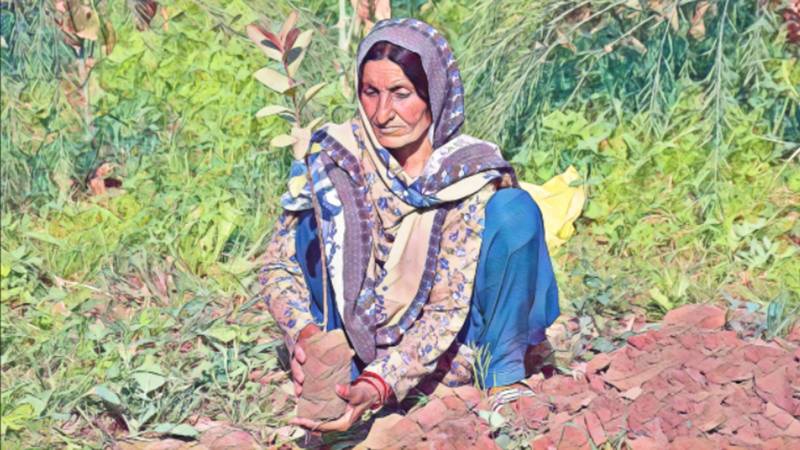
Sustainable development goals address gender equality as a fundamental right and a necessary foundation for peace and a sustainable world. Yet we are far from an equitable state of affairs.
On average, women earn 23% less than men globally and spend about three times as many hours in unpaid domestic work. Sexual violence against female social workers is becoming a matter of concern. United Nations reports highlight the severity of the situation, stating it will take 300 years to end child marriage and 286 years to close gender gaps and remove discriminatory laws. It will take another 47 years to achieve equal representation in national parliaments.
Worldwide, nearly half of married women lack decision-making power and sexual and reproductive rights. Furthermore, 35% of women between 15 to 48 years of age have experienced physical violence from an intimate partner or non-partner.
Global gender gap reports indicate that reproductive health is the largest contributor to gender inequality worldwide. The Arab states and South Asia are notably weak in female empowerment. According to the global gender gap index, no country has yet achieved full gender parity, although Norway, Finland, and New Zealand have closed the gap to 80%. Southern Asia has achieved 63.4% gender parity, the second-lowest score among the eight regions. Bangladesh, Bhutan, and Sri Lanka are the best-performing countries in the region, while Pakistan, Iran, and Afghanistan rank lowest both regionally and globally.
Where Pakistani women stand
Pakistan has 116.86 million females and 118.96 million males. Firms with female majority ownership constitute 8%, while firms with female top managers make up 6%. The informal sector employs 84.30% of workers. Women's advancement to leadership roles is limited to 4.47%.
The unemployment rate for females is higher, with 9.24% of the female labour force unemployed compared to 5.61% of males. There are 11.04 million women in the labour force, whereas 37.70 million men are present in the labour force.
Khyber Pakhtunkhwa (KP)
KP faces significant gender inequality, with females lagging in every dimension of life. There are 28,178 government schools in KP, with 17,649 for boys and only 10,527 for girls. Adequate schooling for girls is not ensured. Gender gaps in school enrolment are significant, with 66% of boys enrolling in government and private schools compared to only 34% of girls. The gender gap in enrolment is 32% across both government and private schools in KP. Gender-sensitive education policies are lacking, and parents are not motivated to send girls to school.
Balochistan
The gender education gap in Balochistan is very wide, with 83% of girls not in school. Access to education is a significant challenge for women in Balochistan, where only 27% of women are literate, the lowest rate in the world. Baloch women often spend their lives confined to domestic tasks, and early and forced marriages are prevalent, robbing young girls of their right to education. This perpetuates the cycle of gender inequality, worsening and widening the gap.
Punjab
The Punjab Commission on the Status of Women has recorded some positive trends, including a 13% rise in female voter registration from 2013-2017 and 28% female labour force participation. Female literacy in Punjab stands at 54%, higher than the national average of 48%. Punjab’s population is 110 million, with 51% men and 49% women.
However, challenges to women's participation in employment and decision-making persist. Vulnerabilities include inequality, lack of adequate education, and limited economic opportunities. Departments are working to enhance women's participation in public sector employment, skill development, and scholarships.
Sindh
A downward trend in female labour force participation has been observed in Sindh over the past fifteen years. Female teachers are scarce; for example, Dadu district has 582 girls' primary schools but only 82 female teachers, and Tando Allahyar has 530 girls' primary schools with only one female teacher. This gender disparity represents a significant administrative failure in Sindh.
What is required
A United Nations Development Program report from 2022 shows that Pakistani women often subordinate their own needs to cater to their families, particularly children. Women prioritise men's food over their own, leading to nutritional deficits. Sons are favoured over daughters, resulting in girls being pulled out of school. Women experience social isolation and are often excluded from family events to save on purchased gifts.
Gender equality is positively linked with the human development index. More equality correlates with better living standards. Developed countries with high gender equality, such as Norway, Finland, and Denmark, also enjoy high growth and living standards.
Allocating female labour force participation productively reduces gender inequality and benefits industries. Industries that employ more women tend to grow faster compared to those with gender inequality. Real economic outcomes are significantly impacted by gender inequality.

